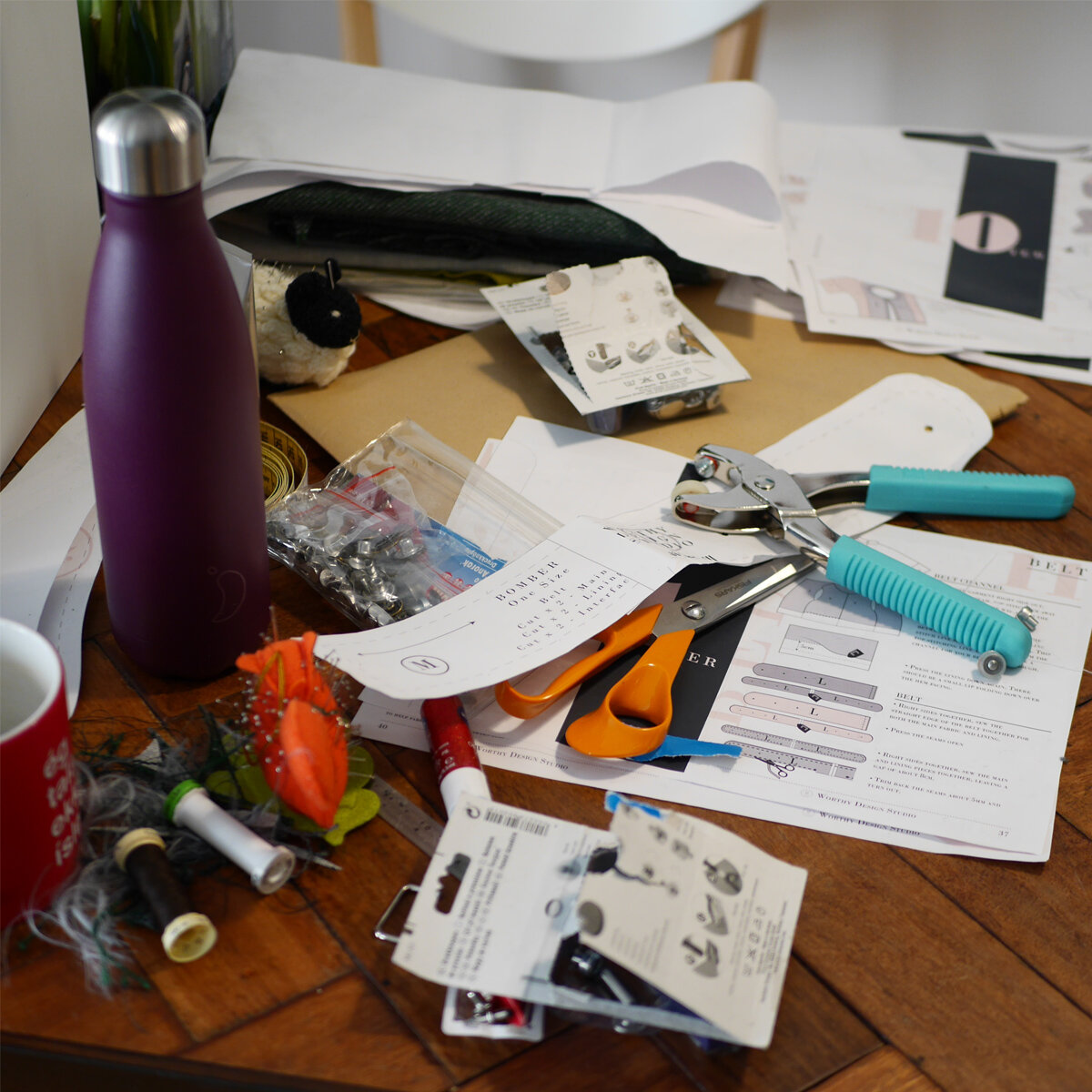Iconic Bomber
PROJECT: One size modern bomber jacket with an adjustable belt and interesting panel details which would be great for colour blocking and scrap busting.
PATTERN: The Iconic Bomber by Worthy Design Studio
REASONS FOR MAKING: This version of the jacket has been made in collaboration with Amy of Craft and Thrift Shop, a deadstock fabric supplier based in Edinburgh, Scotland. I was kindly gifted some of her gorgeous deadstock fabric to make my jacket with. And with a growing bump, the extendable waistband was going to be a big bonus!!!
FABRICS:
For the main fabric, I used Amy’s Wool Medium Weight Dressmaking Fabric in Green/Grey. While this colour is no longer available, you can still get your hands on some other gorgeous colours in Amy’s Etsy shop in the Wools, Tweed & Tartans section. That’s the beauty of deadstock fabric, once it’s gone, that’s it! So you know it’s unique! (And sustainable - double winning!)
The lining is an acetate from my stash.
Fusing was a heavy weight woven fusing, more like a tailoring canvas. Again, this was from my stash.
TRIMS: 1 Metal teeth open-ended zip (56cm) and 6 silver anorak snap fasteners (15mm), both left over from making the previous version of the Iconic Bomber.
HOW TO: I was very excited about making up this version. As soon as Amy asked if I was interested in collaborating I jumped at it. I think the idea of deadstock fabric is a no-brainer and the more people promoting its use, the better.
This fabric has a relatively thick yarn in it’s weave which means that it does fray easily when cut so I made sure that I was ready to sew as soon as the cutting was done. This just ensures that there is minimal handling involved so that the fibres stay as intact as possible. I worked on the lining first so that I knew that was ready to go. Because the lining was acetate, it also has a tendency to fray so I stay-stitched around the edges before folding it away for when I was ready to join it to the main jacket.
I used a heavier fusing than I normally would because it’s all I had in my stash and I prefer to use up what I have rather than jumping at virgin supplies. But it turned out to be a great choice for it as it gave the jacket front an added structure I wasn’t expecting and the cuffs are super sharp. My previous version of this jacket was made in a soft cashmere wool mix so the drape is very different. I’m loving the structured vibe this fusing gave. It was closer to the Japanese style lines that inspired the jacket in the first place. (You can read about the story behind the jacket design here) The extra structure from the fusing also means that the belt is good and sturdy.
I really wanted to try and do a contrast back panel in the circle but when it came to choosing the right fabric, nothing I had in my stash quite worked and seeing as how I wanted to make this jacket as sustainably as I could, I didn’t want to buy new fabric to go with it so I kept it uniform. I’m dying for someone to contrast it up as Maeve did here. So if you do, be sure to let me know!
This fabric was really nice to work with. That looser weave and wool characteristics allowed for easy manipulation of the circular back panel. I could shrink it slightly with steam or gently tease it out with a gentle pull.
WHAT WENT WRONG: The collar became a little bulky to work with and perhaps I should have used lining on the inner collar rather than using the wool but in saying that, it worked out just fine. Again, that looser weave has it’s advantages because it meant I didn’t have to nick into the curved edges of the collar, they eased naturally as the fibres parted. So while it was bulky to handle while sewing, it actually made it easier when turning it out.
LESSONS LEARNED: I love how using differently weighted fusings can really alter the handle of a fabric. If I’d gone for a standard jacket weight fusing, my sleeves wouldn’t have that gorgeous sharp cuff edge and the front wouldn’t be as angular. Try playing around with different fusing if you can so that you can become familiar with their characteristics. This is a sure way to really up your sewing game when it comes to choosing the right fabrics for a project.
VERDICT: I’m delighted with how this turned out and especially since it was made using deadstock fabric and stash fabric and trims.
Thanks so much to Amy from Craft and Thrift Shop for gifting me the fabric. It was really great to work with and I hope you like what I did with it!



